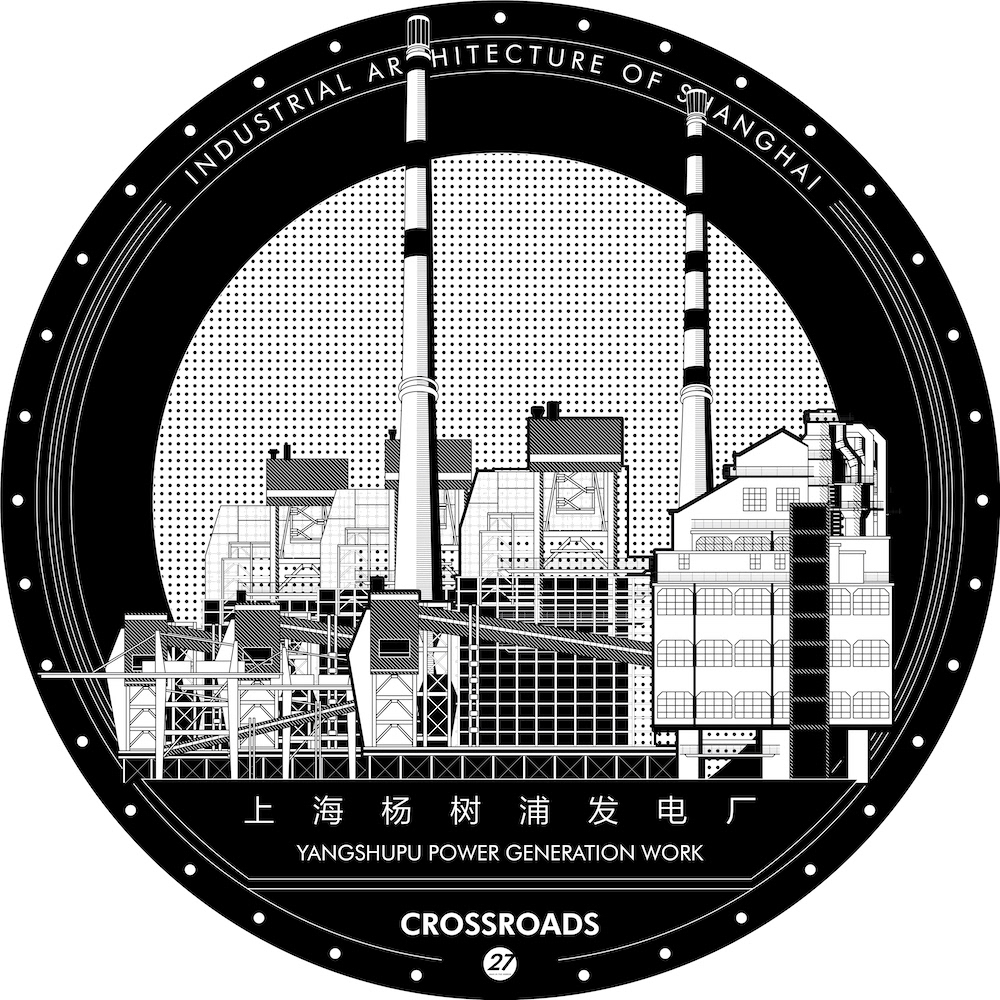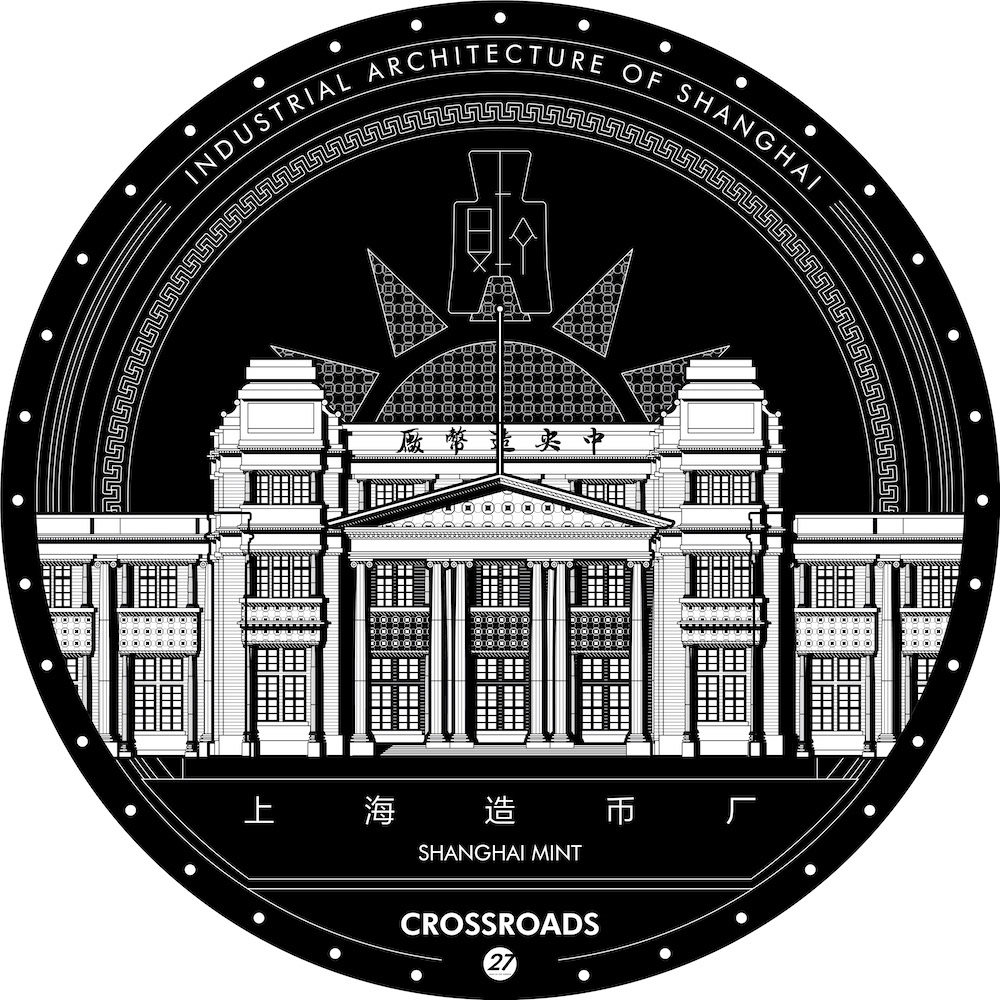My Favorite Shanghai Industrial Buildings
Industrial buildings are usually located in some messy corners in a lot of cities, they are a kind of “huge and powerful vulnerable groups”, and they are silently serving the cities for all kinds of functions and demands. However, the cities are just pushing them toward the much wilder periphery. I wonder whether or not future technical improvement can alter such a situation, but, as a building-loving spectator, I am just feeling certain sympathy on those “huge and powerful vulnerable groups”.
Fortunately, nowadays it is an era in which appearance is everything, so many industrial buildings are kept by people due to their wonderful appearances, and are reused and transformed into all sorts of industrial parks, museums, and clubs, etc.. They are attached with prosperous skins together with the cities, they help broaden the public's visions, and enable every ordinary person wandering in the street to realize that those industrial buildings can be so charming, and comprehend the fate transformations of those buildings. Some of these transformations are related to aesthetic appreciation, or probably to the change of functions, or maybe due to good luck. All these good and interesting transformations are worth expecting.

Currently, I just gradually note them down with my paintings-#My Favorite Shanghai Industrial Buildings# and the Illustration Series thus come into being, among which some paintings of these industrial buildings has taken on a new look. Those I painted are just what they used to be, maybe some of them are quietly nurturing a new future, which I was not aware of, and just painted them to be what they currently are. Some buildings maybe were lost forever, I can just paint them according to my own imagination based on online data. Just have a glance at them, if you like. Here are only nine paintings at present, and following ones will be provided in the future.

SHANGHAI AQUARIUS SODA CO.,LTD
In 1864, George Smith, “AQUARIUS COMPANY”(Its Chinese name was “广和洋行”) was founded by a British merchant in the British Settlement at that time. The Chinese characters, “正广和”, mean “original flavors, wide circulation, and amiable manners”. It was, as a matter of fact, a soda plant. Its registered trade mark was AQUARIUS, which also means a kind of constellation, the canbiel of the zodiac, that is “precious vase” in Chinese. The image of ancient Babylon's AQUARIUS is a fairy pouring water with an Aquarius in her hands. As a result, this trademark means containing holy water with precious vase.
(ps. I, myself am also a pure AQUARIUS.)

YANGSHUPU POWER GENERATION WORK
It is a large thermal power plant early founded in China, which is located in Yangpu District, Shanghai, and was both invested and founded by a British merchant in 1913. Its initial installed capacity was 10400 kilowatts, and increased to 121 thousand kilowatts in 1924, becoming the largest power plant in the far east at that time.
Today ,this power plant is still supplying power to Shanghai, and it has an enormous building bulk!

SHANGHAI SLAUGHTERHOUSE
The former site in 1933 was Shanghai Municipal Council Slaughterhouse, which was invested and built by Shanghai Municipal Council in 1933.
This building is actually familiar to many people, because many years ago it was renovated and repaired, and changed into commercial exhibition centers or creative industrial parks. Those suspending lanes paved for livestock passing has already become some elements of modern artist creation, and those umbrella-type columns also add some aesthetic sense to the fashion show center.
Concerning the designer of this building, many printed references mentioned that it was Balfours, a British designer. However, there are also other different interpretations online, so I have no choice but to sit back and watch their discussions.

80,000 TONS SILO OF MINSHENG PORT
It's said that it was the largest bulk grain silo in Asia. Currently, it has been protected as cultural relics, and its function has been transformed into culture and artist center. When I saw this building for the first time, I was situated in the Yangshupu Power Plant on the opposite bank of the river. At that time, I was very curious and wondered what that huge and mysterious row of “missile-launching platform” was, because its rinsing lime outer façade looked extremely ruthless. Later on, when approaching for observation, I found lots of delicate decoration details of modern buildings on it are actually more pleasing and interesting, while the inner structures whether those original ones or reshaped ones all give me a fantastic impression.
The actual building is one third longer than what I painted. Such a length may generate a overawing power, and the view angle painted by me was right my first sense on it when I overlooked it from the opposite side of the river.

THE SHANGHAI WATERWORKS CO., LTD.
In 1880, The Shanghai Waterworks Co., Ltd. was founded in London, U.K. by some British merchants from Shanghai, and the next year, the waterworks, designed by Hart, a British designer, located at No. 830, Yangshupu Road, were built near the side of Huangpu River.
Perhaps due to its British design, those red bricks with profound and variable implications were applied, and the appearance of this building is also the British traditional castle style. From a distance, it looks just like an amusement park, and I wish the designer wouldn't be angry with me.

SHANGHAI GAS CO., LTD.
At that time, gas was also called “automatic fire” in Chinese, which was quite suitable for the nature of gas.
The gas plant began to supply gas in 1865, which was initially used for urban lightning, and gas lamps replaced those kerosene lamps on the streets of Nanjing Road and the Bund in Shanghai. It was only more than a decade after the coal gas dry distillation technology was created during the industry revolution, earlier than Japan and other cities in Asia. It was considered as the beginning of urban public utilities in Shanghai.
I still remember that I ever imagined visiting the gas plant before, but was refused by the doorkeeper. Fortunately, an old technician from the plant passing by believed I was not a bad person with a simple and honest appearance, so he sat down and chatted with me for about two hours about the structure of the gas containers and the history of the plant. During the course, he mentioned the Shanghai Gas Co., Ltd., but what I was curious about was the inner structure of the gas containers. The technician gave a vivid example, he asked whether I saw the jar pickling vegetables, and the gas container was able to stretch and contract without leaking gas, which was of the same principle with the pickling jar. I don’t know whether it is true or not, but I still believe it.

SHANGHAI MINT
Founded in 1920, Shanghai Mint majored in designing and producing nationwide current coins, metal commemorative coins, concurrently operated such processing business as metal souvenir badges, medals, industrial gold, industrial silver, aluminum, and machinery design and manufacturing, etc.
Many years ago, when seeing various bank buildings, I usually believed they were really splendid ones, each of which was more powerful and magnificent than others! Currently, when I see the buildings of the mint, I still believe the bank buildings are much more splendid.
In fact, I just think that this mint building is really incomparably low key but solemn. It has a sense of military fortress, and looks like those governors' buildings I ever saw in Tsingtao.

MA LING CANNED GOODS CO., LTD.
In 1930, Maling Canned Goods Co., Ltd. started up. Maling is an image of a blooming plum blossom in Chinese, standing for happiness and good luck. Another version goes that it was translated from a Roman word, Maling, by sound, which seemed as if it had targeted at the global market at the beginning of its start-up. However, what it targeted at was exactly the Shanghai local market, otherwise, why did it use a foreign name?
In 1933, the plant was moved to No. 808, Hongqiao Road, Shanghai, and its registered trademark, Kindon (gold shield), means the high quality of the products, just like a glittering gold shield.
Whenever I want to enjoy those spicy and delicious Sichuan dishes such as hotpot, maocai, or malatang, Maling Kindon is a must.

SHANGHAI FOH SING MILLS
The flour story of the Rong brothers may date back to Guangxu 28th year in the Qing dynasty (1902), so I can not tell the story with such a long history and profound cultural background. I just learn about that Foh Sing Mills ranged from Factory 1-12, and can imagine that their mills and warehouses were lined along the whole Suzhou River. When I saw these mills, packaging factories, and warehouses for the first time, my feeling was that these industrial buildings could be so elegant, and they shaped classical and graceful skins for the inverted reflections in Suzhou River.
I will continue to paint those industrial buildings in Shanghai, because they are never just the above mentioned nine ones in my schedule, and now let's just make it an ordinary beginning. I hope those readers who ever read this article can recommend me more industrial buildings you like, and my curiosity is looking forward to your messages.










